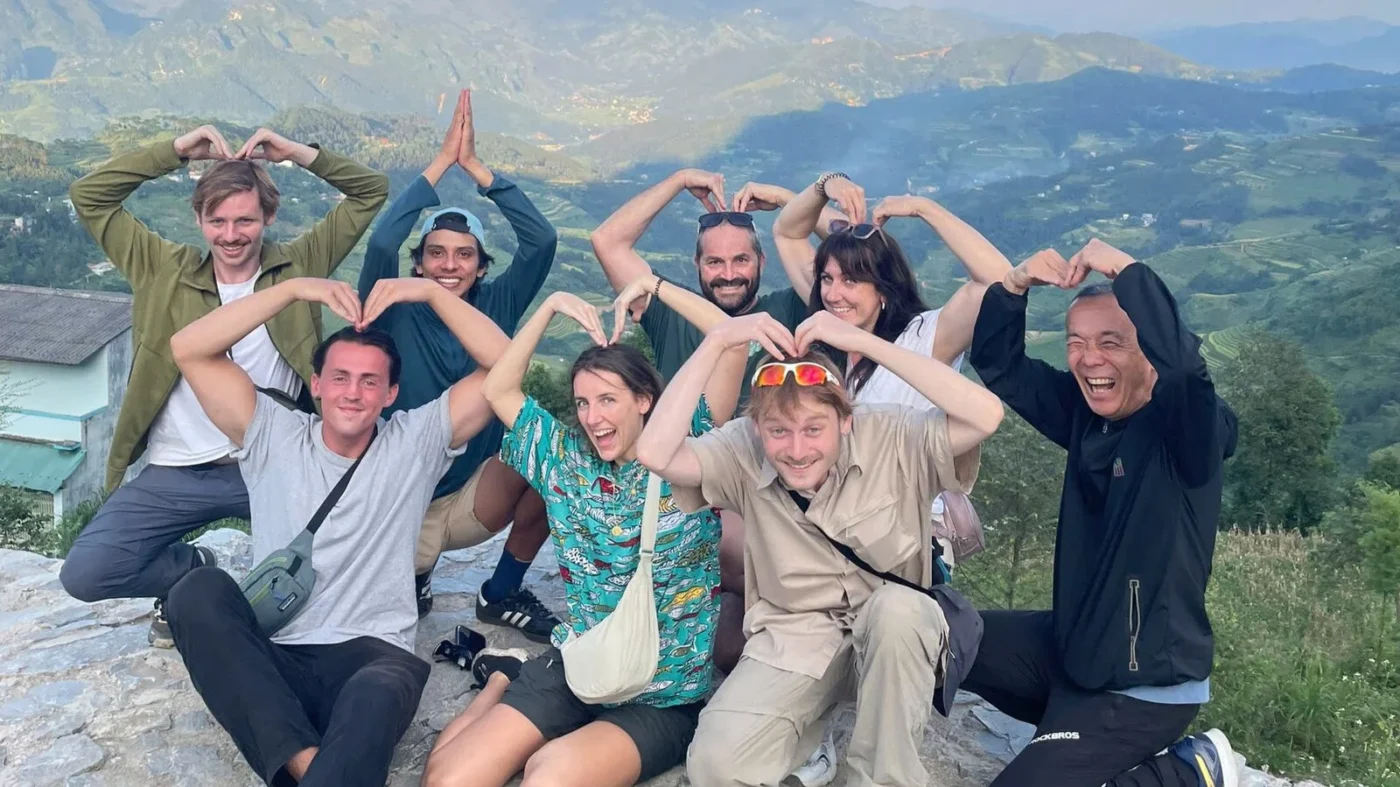Uncategorized
Riding the Ha Giang Loop: A Journey Through Vietnam’s Wild North
The Ha Giang Loop is a 350-kilometer motorbike pilgrimage through Vietnam’s untamed northern frontier, where every curve tells a story of adventure. As of April 2025, this route remains a raw, exhilarating escape, far from the polished tourist trails of Hanoi or Hoi An. With its rugged roads, sweeping vistas, and vibrant ethnic communities, the loop is a journey of discovery for riders seeking freedom and connection. This narrative recounts the emotional and physical experience of riding the Ha Giang Loop, with up-to-date insights and tips for your 2025 adventure.
The Call of the Wild North
Riding the Ha Giang Loop feels like stepping into a world untouched by time. From Ha Giang City, the route twists through villages like Dong Van, Meo Vac, Yen Minh, and Du Gia, each mile revealing:
- Heart-Pounding Roads: Narrow paths and steep climbs test your nerve.
- Epic Landscapes: Limestone peaks and rice terraces paint a dramatic scene.
- Human Connections: Hmong and Tay locals share their warmth and traditions.
In 2025, the loop’s wild spirit makes it a rider’s dream, blending solitude with shared moments.
Why Ha Giang Loop Should Be On Your Bucket List
Known for its jaw-dropping landscapes, the Ha Giang Loop is a 350-kilometer motorbike route that takes riders through towering mountains, deep valleys, ethnic villages, and remote roads barely touched by modern life. The Loop has earned its reputation among adventure travelers, especially for those eager to push their limits while experiencing Vietnam’s untouched northern wilderness.
The Ultimate Motorcycle Adventure
For the daring traveler, there’s no better way to experience the Ha Giang Loop than on two wheels. The road winds through hairpin bends, across cliffside passes, and through dense jungles — perfect for motorbike enthusiasts and adventure seekers. Ma Pi Leng Pass, often called the “King of Vietnam’s Mountain Passes,” is especially infamous for its sheer drops and twisting turns.
The freedom of the open road combined with a sense of exhilaration makes this journey unforgettable. Whether you’re an experienced rider or a beginner, the breathtaking views will keep you captivated every moment.
Exploring the Heart of Northern Vietnam
What makes the Ha Giang Loop so special isn’t just the scenic beauty, but the cultural diversity. As you ride through the region, you’ll encounter ethnic minority groups like the Hmong, Tay, Dao, and Nung people. These groups have been living in the area for centuries, and their traditional lifestyle remains relatively unchanged.
Stop in towns like Dong Van, Meo Vac, and Yen Minh for a peek into daily life. Dong Van is home to the famous Dong Van Stone Plateau, which is recognized by UNESCO as a global geological heritage site. Meo Vac, tucked between steep mountains, is the perfect spot to see local markets buzzing with handmade goods, exotic produce, and colorful textiles.
Adventure Beyond the Ride: What to Expect Along the Way
While the ride itself is thrilling, the Ha Giang Loop offers much more for travelers to dive into. You’ll find secluded waterfalls, hidden caves, and remote homestays that offer a deeper connection to Vietnam’s northern culture. Spend a night in a local homestay, and you’ll be welcomed with a hot meal and warm hospitality — a reminder of the generosity of the people living in this beautiful, isolated corner of the world.
Take a detour to the Nho Que River, a turquoise-colored river surrounded by limestone cliffs. This spot is often praised for its ethereal beauty and tranquility. A boat ride or a small hike can lead to one of the most serene moments of your journey.
Tips for Riding the Ha Giang Loop in 2025
- Renting a Bike: In 2025, you can easily rent a motorbike in Ha Giang city for around $10–15 per day. Make sure to inspect the bike thoroughly, especially the brakes and tires, before hitting the road.
- Guided Tours: If you’re not an experienced rider or prefer a more relaxed experience, consider a guided tour. Local guides not only ensure safety but also offer insights into the history and culture of the region.
- Packing Essentials: Be sure to bring light layers for the day and warmer clothing for the chilly nights in the mountains. A good helmet, sunscreen, and first aid kit are also recommended for the trip.
- Accommodation: Most of the accommodation options along the route are simple, budget–friendly homestays or guesthouses. Book ahead, especially during peak seasons, as they can fill up quickly.
A Road Trip That Transforms
The Ha Giang Loop is more than just a road trip; it’s an immersive experience that connects you to Vietnam’s wild heart. The stunning natural beauty, combined with the warmth of its people and the rush of riding through one of Southeast Asia’s most dramatic landscapes, will leave you with memories that last a lifetime.
For those planning to work remotely or take a break from the busy city life, the Ha Giang Loop offers an incredible balance between adventure and tranquility. If you’re interested in planning a trip to Vietnam and working remotely during your travels, digital nomad mentor tips can help you navigate the experience.
The Journey Unfolds: A Rider’s Tale
Day 1: Ha Giang City to Yen Minh
The journey begins with the hum of a semi-automatic 150cc bike, rented for $10-$15 per day. The road to Yen Minh (90 km) climbs through misty hills, with the Quan Ba Heaven Gate offering a first glimpse of the Tam Son valley. The Twin Mountains loom like guardians, and the rider’s heart races with anticipation.
Day 2: Yen Minh to Dong Van
The 60-km ride to Dong Van is a rollercoaster of curves, leading to the Lung Cu Flag Tower, Vietnam’s northernmost point. Standing atop the tower, with views into China, feels like conquering a frontier. The Dong Van Sunday Market buzzes with Hmong vendors, their colorful clothing a stark contrast to the limestone backdrop.
Day 3: Dong Van to Du Gia via Ma Pi Leng
The Ma Pi Leng Pass is the journey’s climax, its cliffside road both terrifying and exhilarating. The Nho Que River glitters below, and a pause at the Sky Path lookout brings a moment of awe. The ride to Du Gia (70 km) winds through quiet villages, ending at a Tay homestay where rice wine and laughter flow.
Day 4: Du Gia to Ha Giang City
The final 70 km back to Ha Giang City includes a stop at Du Gia Waterfall, where a swim washes away the dust of the road. The return feels bittersweet, with the wild north etched into memory.
Emotional Highs and Lows
Riding the loop is an emotional odyssey. The thrill of navigating hairpin turns is tempered by moments of solitude on misty ridges. Challenges like gravel patches or sudden rain test resilience, but the warmth of a Hmong family’s hospitality restores the spirit. Each day brings a new story, from a shared meal to a sunrise over the karsts.
Cultural Moments That Define the Ride
The loop’s ethnic communities are its soul:
- Markets: Dong Van and Meo Vac markets pulse with life, offering Hmong textiles and Tay snacks like sticky rice dumplings.
- Homestays: A Hmong homestay in Lung Tam ($5-$10 per night) reveals traditions like hemp weaving, while a Tay host in Du Gia shares folklore over dinner.
- Festivals: The Hmong New Year (December-January) or Khau Vai Love Market (spring) bring vibrant celebrations, with dances and music under starlit skies.
Respect locals by asking before photographing and supporting their businesses.
Best Time to Ride in 2025
Choose your season for the best ride:
- September to November: Clear skies (15-25°C) and golden terraces make autumn ideal.
- March to May: Spring’s greenery (18-28°C) offers smooth riding.
- June to August: Rainy season is challenging but lush.
- December to February: Cold (as low as 5°C) and foggy, perfect for introspective rides.
Check weather updates via mobile apps or local sources.
Practical Tips for Riding the Ha Giang Loop
To ensure a memorable journey:
1. Rent a Reliable Bike
Choose a semi-automatic 150cc bike ($10-$15 per day) in Ha Giang City. Inspect brakes and tires.
2. Stay Safe
- Wear a full-face helmet and protective gear.
- Avoid night riding due to hazards.
- Use your horn on blind corners.
- Carry a first-aid kit and insurance.
- Know clinic locations in Ha Giang City and Dong Van.
3. Get the Ha Giang Permit
Secure the $10 permit in Ha Giang City.
4. Pack Light
- Essentials: Passport, permit, cash, and a local SIM card.
- Gear: Layers, rain gear, a reusable water bottle, and a camera.
- Luggage: Carry a small backpack.
5. Stay Connected
Wi-Fi in Ha Giang City and Dong Van supports digital nomads.
6. Travel Sustainably
- Support local businesses.
- Avoid single-use plastics.
- Respect cultural norms.
Getting to the Ha Giang Loop
Ha Giang City is 5-6 hours from Hanoi:
- Sleeper Bus: $15-$20.
- VIP Limousine Bus: $25-$30.
- Private Transfer: $100-$150 one-way.
Secure the Ha Giang Permit in Ha Giang City.
Is the Ha Giang Loop Safe?
The loop’s roads are demanding but safe with caution:
- Self-Driving: Ride slowly and watch for hazards.
- Guided Tours: Local drivers ensure safety.
- Emergencies: Carry a first-aid kit and insurance.
Final Thoughts: A Road Less Traveled
If you’ve ever dreamed of a journey that takes you off the beaten path, through hidden villages, remote valleys, and untouched mountains, the Ha Giang Loop is the perfect ride. The adventure, the culture, and the beauty that surround you make this road trip one of the most unforgettable you’ll ever take. So, saddle up and get ready to ride through Vietnam’s wild north.

